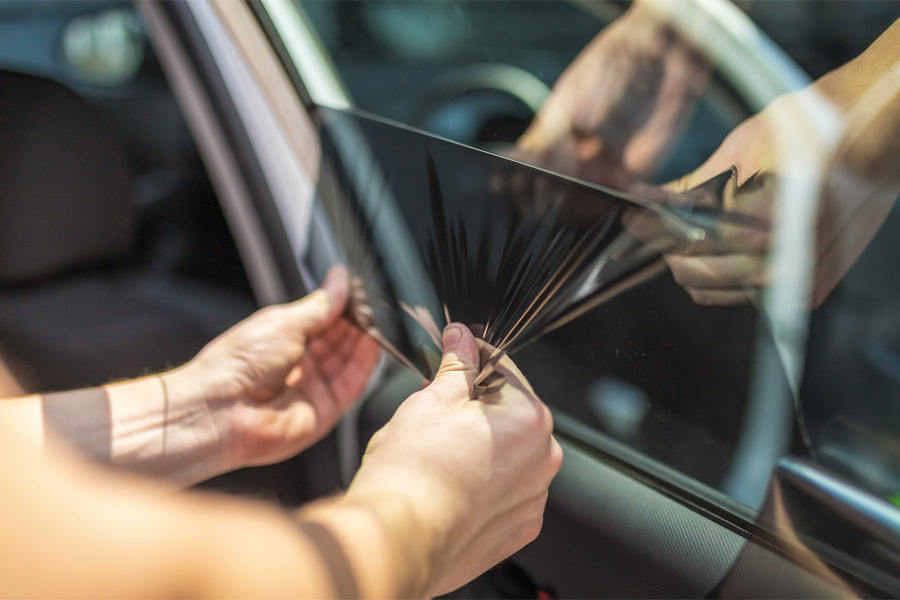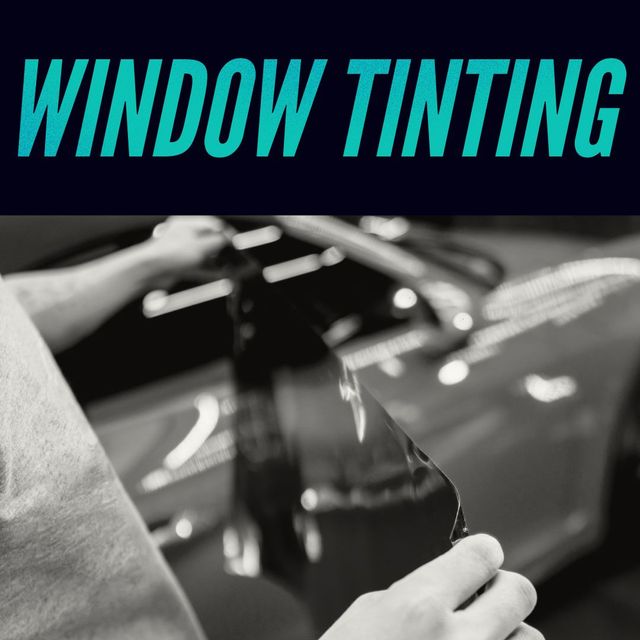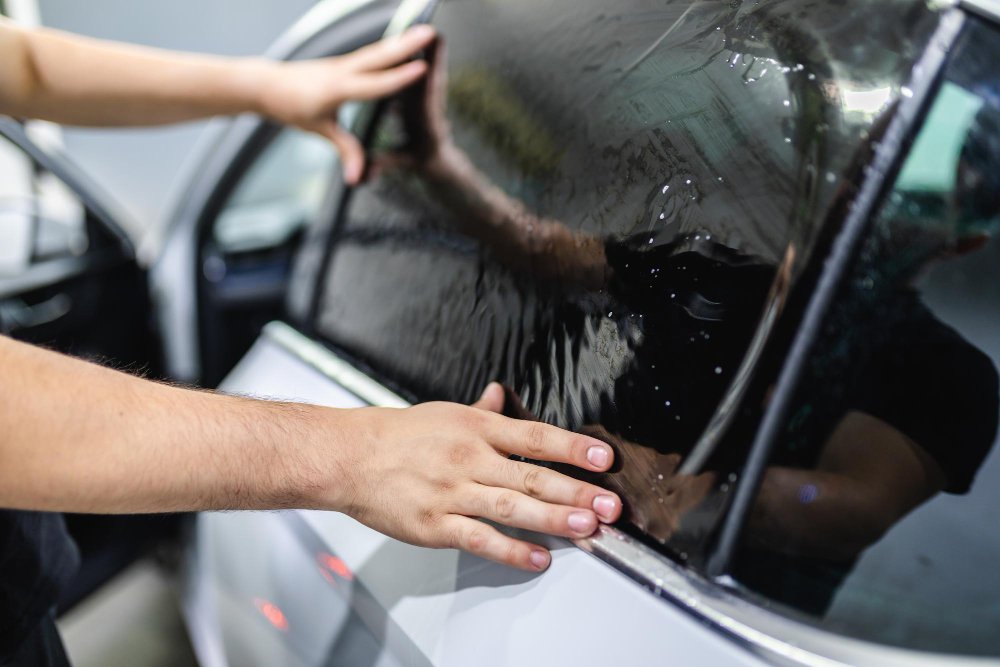Auto Window Tinting: Lasting Security for Your Auto's Windows
Wiki Article
Home Window Tinting Regulations and Standards: What You Required to Know Before Tinting Your Vehicle
Prior to continuing with home window tinting for your car, it is vital to familiarize yourself with the diverse legislations and standards that control this method across various states. These policies dictate the allowable levels of color darkness, often determined by visible light transmission (VLT) percents, and consist of particular terms for front windscreens targeted at ensuring road safety and security. Furthermore, specific territories may supply clinical exceptions for people with certifying conditions. Comprehending these intricacies can save you from potential legal implications, however what are the particular policies in your state?Overview of Window Tinting Rules
Home window tinting legislations are regularly based on variant across various jurisdictions, showing local guidelines and safety and security factors to consider. These laws determine the permitted degrees of color darkness and reflectiveness on lorry windows, guaranteeing that vehicle drivers maintain appropriate exposure while likewise safeguarding versus harmful UV rays and warm.A lot of regulations identify window tinting based on the Visible Light Transmission (VLT) portion, which suggests the quantity of light that can travel through the window. Generally, lower VLT portions indicate darker colors. Regulations commonly differentiate between the front, side, and rear windows, with stricter restrictions related to the front windshield to enhance security for both the chauffeur and various other road customers.
Compliance with window tinting guidelines is crucial, as violations can result in fines, compulsory elimination of the tint, and prospective rises in insurance policy costs. It is important for automobile proprietors to acquaint themselves with local legislations prior to continuing with window tinting setups.
State-by-State Color Regulations
Comprehending the certain home window tinting guidelines in each state is vital for car owners seeking to abide by the law. Each state in the U.S. has established its very own collection of regulations controling home window tinting, which can differ substantially. These regulations often determine the allowed levels of tint darkness, the kinds of windows that can be tinted, and any kind of clinical exemptions that might apply.As an example, states like The golden state have stringent constraints on tint darkness for front home windows, while others, such as New Mexico, might allow darker colors. In addition, particular states mandate details visibility percentages for different home windows, consisting of the windshield, front side home windows, and back windows. It is vital for cars and truck owners to acquaint themselves with their state's regulations to stay clear of potential penalties or charges.
Furthermore, some states may call for a qualification sticker to be positioned on tinted home windows, suggesting compliance with state regulations. Failure to comply with these guidelines not just takes the chance of legal effects but can likewise influence security and visibility while driving. As a result, car proprietors ought to perform thorough study or get in touch with neighborhood authorities to guarantee complete understanding and conformity with state-by-state tint regulations.
Allowed Color Degrees and Kinds
Several lorry proprietors may be amazed to find out that permitted tint levels and types vary commonly across different states. Each state has actually developed its own policies concerning the acceptable darkness and reflectivity of home window tint, often gauged by Visible Light Transmission (VLT) percentages. VLT describes the quantity of light that can go through the tinted windows; therefore, a lower percent suggests a darker tint.
In addition, the sorts of tint products permitted can vary, with some states forbiding mirror-like or metallic surfaces. It is essential click this for car owners to familiarize themselves with their state's certain regulations to ensure compliance. Non-compliance can lead to penalties, mandatory elimination of the color, or various other legal consequences, making it important to recognize these laws prior to continuing with installation.
Medical Exceptions for Tinting
While not all states offer allowances for medical exemptions relating to home window tinting, those that do identify the requirement for particular individuals to boost presence and comfort due to medical problems. Numerous medical problems, such as lupus, skin cancer, and certain eye disorders, can render individuals particularly conscious sunshine. These individuals might require darker colors to protect themselves from harmful UV rays and glow.
It is necessary to note that despite a medical exception, there might still be restrictions on the level of color permitted. Compliance with state laws makes certain that individuals are both safeguarded and within lawful limits. Those thinking about medical exceptions need to contact their local Division of Motor Vehicles or equal authority to comprehend the requirements and procedures essential to get an exemption properly.
Charges for Non-Compliance
Stopping working to adhere to window tinting regulations can lead to substantial fines, which vary by state. Regulation enforcement agencies are equipped to issue citations for vehicles that do not comply with the defined tinting policies. These fines generally include fines, which can range from modest amounts to several hundred dollars, depending upon the intensity of the violation and the state concerned.In some territories, repeated offenses may lead to rising penalties or extra charges, such as mandatory court appearances. Non-compliance might demand the elimination of unlawful tinting, often at the owner's cost. In severe instances, regular wrongdoers might encounter suspension of their lorry registration until compliance is accomplished.
In addition, insurance policy effects might arise from receiving multiple citations for window tint violations. Insurance providers may see such violations as an indicator of riskier behavior, potentially resulting in boosted costs or difficulty in protection.
To stay clear of these charges, it is crucial for vehicle proprietors to acquaint themselves with their regional window tinting legislations and guarantee that their car complies (Window Tinting). This proactive technique not only stays clear of lawful ramifications yet also advertises road safety and security
Conclusion

The majority of regulations categorize window tinting based on the Visible Light Transmission (VLT) portion, which suggests the quantity of light that can pass with the home window. Compliance with home window tinting policies is crucial, as violations can result in fines, required elimination of the color, and possible boosts in insurance policy costs.Recognizing the particular window tinting policies in each state is important for vehicle owners seeking to abide with the regulation. These laws often determine the allowed degrees of color darkness, the kinds of home windows that can be tinted, and any kind of clinical exceptions that might apply.
For circumstances, states like California have rigorous restrictions on color darkness for front windows, while others, such as New Mexico, may permit darker colors.
Report this wiki page